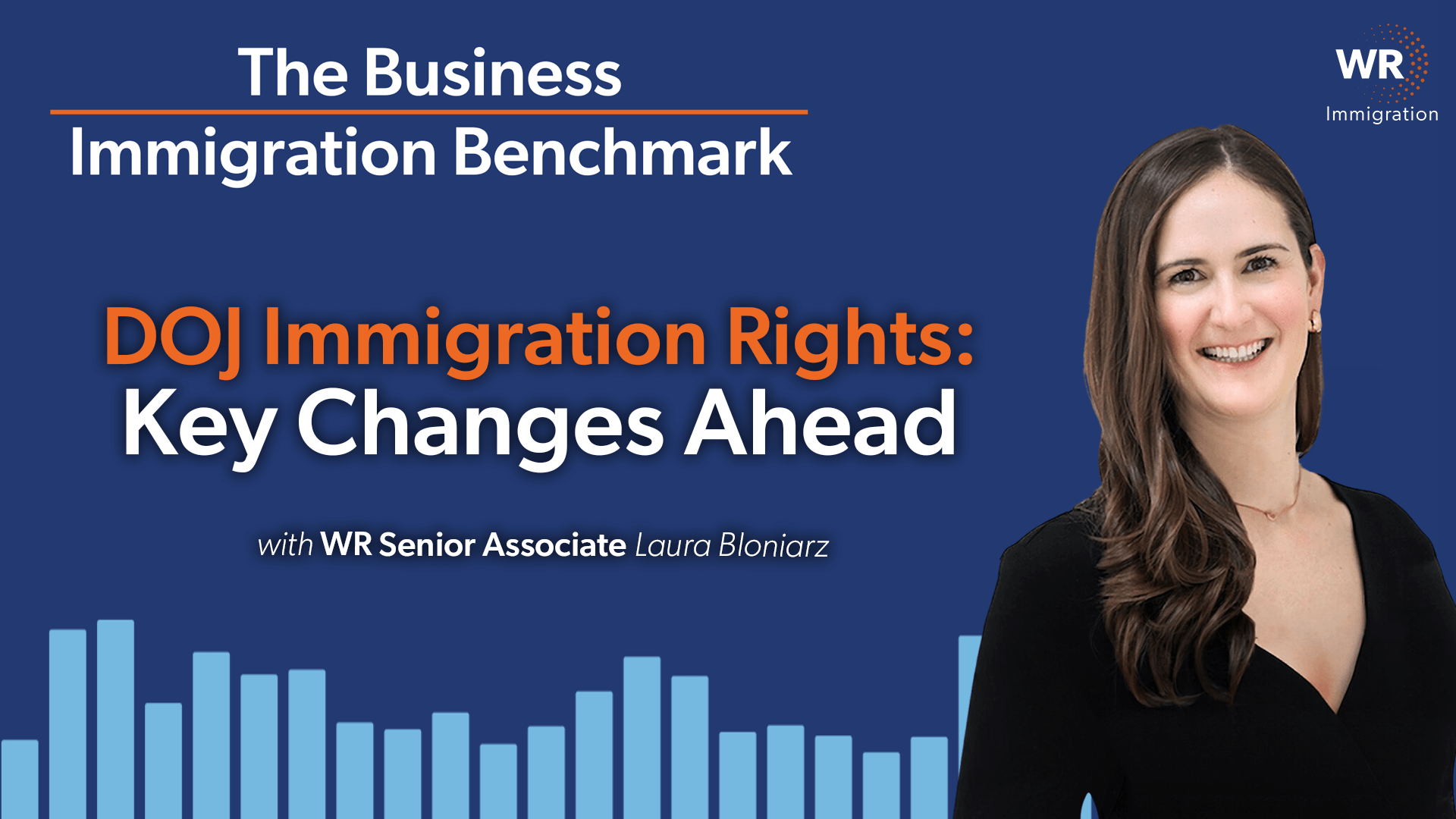Want to stay in the loop? Subscribe here to get the latest updates on the Business Immigration Benchmark podcast and more!
In this week’s episode of The Business Immigration Benchmark, I break down an important shift in the Department of Justice’s Immigration and Employee Rights (IER) Division. With so many headlines flooding the news, it can be difficult to keep track of which changes impact global mobility programs. This episode focuses on what you need to know about the IER’s shifting priorities and what it means for your company’s recruitment and immigration policies.
For global mobility professionals navigating uncertainty, this episode provides actionable insights into how technology, compliance, and change management are shaping industry priorities.
Key Takeaways:
1. DOJ’s Immigration and Employee Rights Division – A Shift in Focus:
The IER enforces anti-discrimination provisions of the Immigration and Nationality Act (INA), ensuring that employers do not unlawfully consider citizenship or national origin in hiring and employment decisions. Under the Biden administration, this office prioritized preventing discrimination against foreign nationals. However, under the Trump administration, the focus has shifted toward protecting U.S. workers and investigating whether companies favor foreign nationals over American workers.
2. What This Means for Employers:
- Companies must ensure that their hiring practices do not inadvertently favor visa holders over U.S. citizens.
- HR and talent acquisition teams should review job postings to avoid requiring U.S. citizenship unless legally necessary.
- Employers should refresh employee handbooks and training materials to align with updated compliance expectations.
3. Biggest Compliance Risk: The PERM Program
- The PERM process tests the U.S. labor market before sponsoring a foreign national for permanent residency.
- Recent legal settlements, including a high-profile case against Meta, highlight the need to ensure that PERM recruitment mirrors standard company hiring practices.
- Employers should work with legal counsel to audit their PERM process and confirm it aligns with broader recruitment strategies.
My Parting Thoughts
With the Trump administration refocusing on U.S. worker protections, global mobility teams should proactively assess their compliance programs. Ensuring alignment between PERM recruitment and regular hiring practices is more critical than ever.
If you have insights or strategies you’d like to share, feel free to DM me on LinkedIn or submit a question here!


